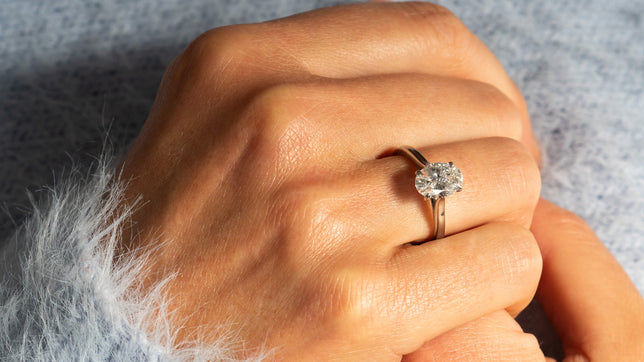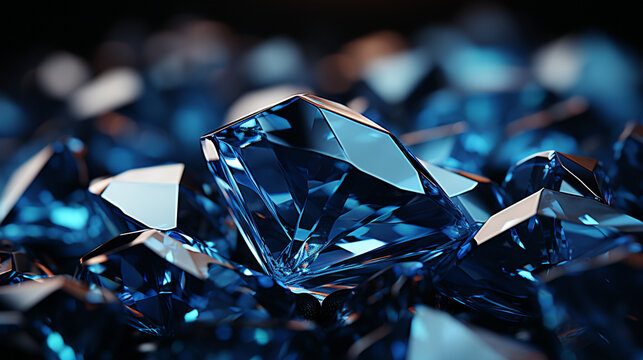Lab-grown diamonds have become a popular alternative to natural diamonds due to their ethical sourcing, affordability, and identical chemical composition. When choosing a lab-grown diamond ring, one of the critical design elements to consider is the setting, particularly the claws (also known as prongs) that hold the diamond in place. The choice of claws for your lab grown diamond rings claws affect both its appearance and security. In this article, we’ll discuss the importance of claw settings and how to select the right one for your lab-grown diamond ring.
What Are Claws in a Lab-Grown Diamond Ring?
Claws, or prongs, are the metal projections that hold the diamond securely in place on a ring. In a lab-grown diamond ring, the claws elevate the diamond, allowing light to pass through the stone from multiple angles, maximizing its brilliance. Typically, the claws will grasp the diamond at its edges or corners, depending on the shape of the stone and the style of the setting.
The choice of claws for your lab-grown diamond ring plays a vital role in both the aesthetics and the protection of the diamond. Different settings will emphasize the diamond’s size, shape, or sparkle in unique ways, so it’s essential to consider how the claws will impact the overall look of your ring.
Types of Claw Settings for Lab-Grown Diamond Rings
When selecting a claw setting for your lab-grown diamond ring, it’s important to choose a style that complements your diamond while also keeping it secure. Here are some of the most common types of claw settings for lab-grown diamond rings:
1. Four-Claw Setting
The four-claw setting is one of the most popular and classic options for lab-grown diamond rings. This design features four prongs that hold the diamond securely, usually positioned at 12, 3, 6, and 9 o’clock on a round diamond. The four-claw setting offers a minimalistic design that allows more light to enter the diamond, enhancing its brilliance. For those who want a simple yet elegant look, the four-claw setting is a great choice for their lab-grown diamond ring.
2. Six-Claw Setting
For added security, many people opt for a six-claw setting for their lab-grown diamond ring. With two additional prongs, this setting provides extra stability, ensuring that the diamond is less likely to shift or become loose over time. The six-claw setting is often recommended for larger diamonds or stones that will be worn daily, as it offers more protection than a four-claw design. Although it covers slightly more of the diamond’s surface, the trade-off for enhanced security is often worth it for those who prioritize safety in their lab-grown diamond ring.
3. V-Claw Setting
A V-claw setting is specifically designed for lab diamonds with sharp corners, such as princess-cut, pear-shaped, or marquise diamonds. In this setting, each claw is shaped like a “V” to protect the diamond’s corners, which are vulnerable to chipping. The V-claw setting provides extra security while ensuring that the delicate edges of your lab-grown diamond ring remain intact. This style is perfect for those who choose angular diamond shapes and want to keep their stone in pristine condition.
4. Double Claw Setting
If you’re looking for a unique and more intricate design, a double claw setting may be the perfect choice for your lab-grown diamond ring. This setting features two claws at each prong position, giving the appearance of eight or more claws holding the stone. The double claw setting is popular for vintage or antique-inspired rings, adding an extra layer of detail and security. While it does cover more of the diamond, this style is favored for its luxurious and protective look, particularly in lab-grown diamond rings with larger stones.
Choosing the Right Claw Setting for Your Lab-Grown Diamond Ring
When selecting the ideal claw setting for your lab-grown diamond ring, several factors should be taken into account to ensure both aesthetic appeal and functionality.
1. Diamond Shape
The shape of your diamond significantly influences which claw setting will work best. For round diamonds, a four-claw or six-claw setting typically complements the stone’s symmetrical shape. However, for fancy shapes like princess, marquise, or pear, a V-claw setting might be more appropriate to protect the delicate points of the diamond.
When considering lab-grown diamond rings, always ensure that the chosen claw setting enhances the diamond’s shape and maintains its structural integrity.
2. Durability and Security
The security of your lab-grown diamond ring is one of the most important aspects to consider, especially if you plan to wear it every day. Six-claw settings and double claw settings are generally more secure than four-claw settings, as they provide extra protection against accidental knocks or bumps. If you have a larger lab-grown diamond or lead an active lifestyle, a more secure setting with additional claws may be the better option.
3. Aesthetics and Light Performance
While the main purpose of the claws is to secure the diamond, they also play a crucial role in how much light reaches the stone, affecting its brilliance. A four-claw setting exposes more of the diamond’s surface to light, enhancing its sparkle. However, some prefer the more vintage look of a double claw setting, even though it may slightly reduce light exposure. When selecting the right setting for your lab-grown diamond ring, think about whether you prioritize sparkle, security, or design.
4. Metal Choice
The metal used for the claws in your lab-grown diamond ring can also impact its overall look. Claws can be made from white gold, yellow gold, rose gold, or platinum, each offering a different aesthetic. If you want your claws to blend seamlessly with the diamond, platinum or white gold may be the best choice. However, if you prefer a more contrasting look, yellow or rose gold claws can add a beautiful pop of color to your lab-grown diamond ring.
Maintenance and Care for Claw Settings
Over time, the claws of your lab-grown diamond ring may wear down or become loose, especially if worn regularly. It’s important to have your ring inspected by a professional jeweler every year to ensure the claws are still secure. If the claws become weak or damaged, they can be retipped or replaced to prevent the diamond from becoming loose or falling out.
Proper maintenance ensures that your lab-grown diamond ring remains as beautiful and secure as the day you bought it. Regular cleaning also helps maintain the diamond’s sparkle, as dirt and oils can build up around the claws.
Conclusion
Choosing the right claw setting for your lab-grown diamond ring is a crucial decision that affects both the security and appearance of the stone. From classic four-claw settings to protective V-claw designs, each option offers its own advantages depending on the shape and size of your diamond. When selecting the perfect claw setting, consider factors such as durability, aesthetic appeal, and how much light the design allows to enhance your lab-grown diamond ring’s brilliance.
With the right setting, your lab-grown diamond ring will not only look stunning but will also remain secure for years to come, making it a cherished piece in your jewelry collection.


